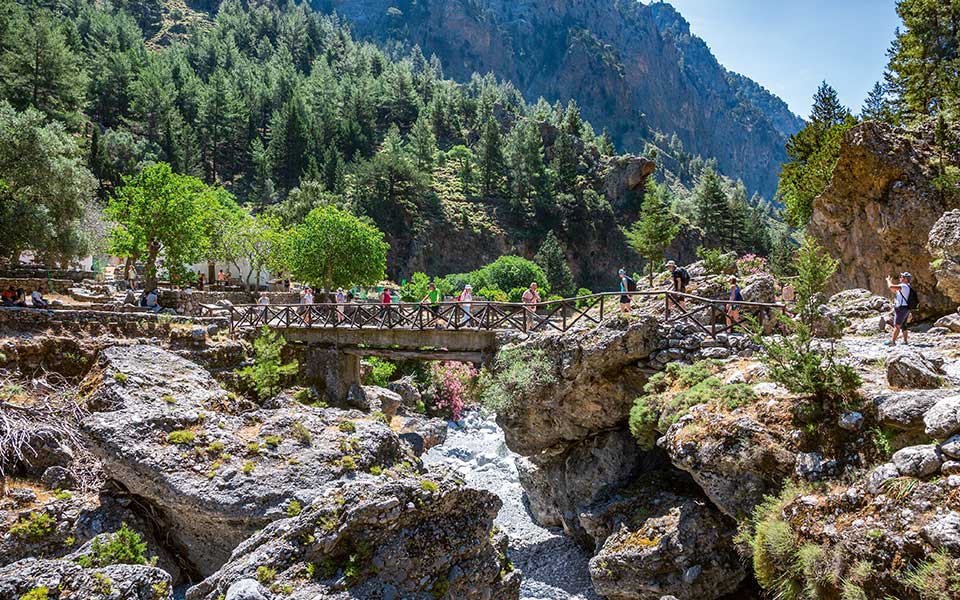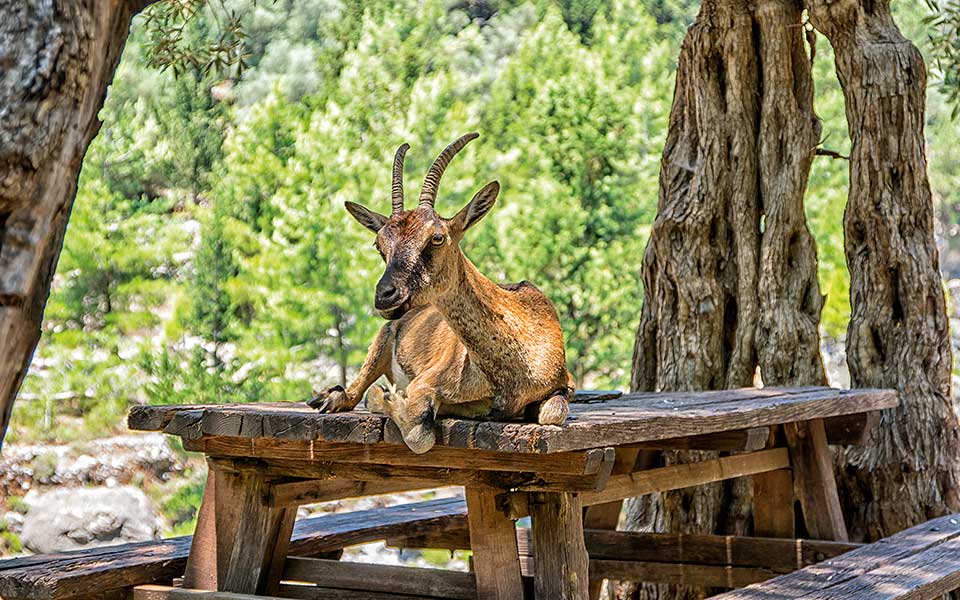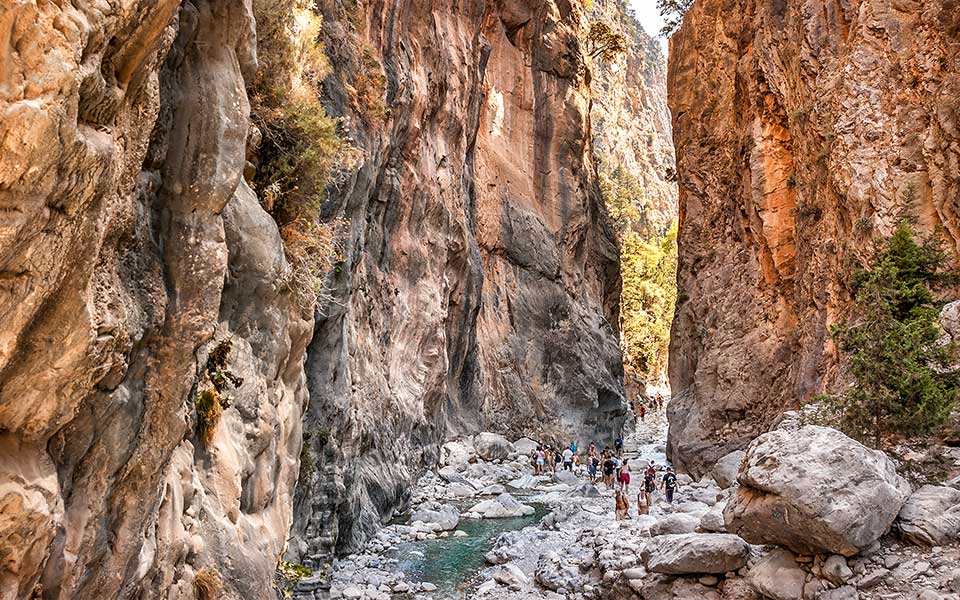The Samaria Gorge – Crete’s most famous hiking route – is a magnet for tens of thousands of visitors each year, and the most popular months – July and August – witness a thousand people a day filing down the 12.8km gorge. The whole walk is 16km, including the last leg to the village of Aghia Roumeli, and takes five to six hours.
Before you start, make sure you’re prepared. You’ll need good footwear; a water bottle, to be refilled regularly along the route; some snacks, to keep your energy up; a hat or cap for when the shade disappears; sunscreen; and a small first aid kit, just in case. It’s also a good idea to bring a lightweight jacket, because it’s often quite cool at the start of the trek high on the mountain in the morning. A walking stick might come in handy, too. (There’s no better way to break in a traditional Cretan katsouna, or shepherd’s crook, than with this walk).
Your starting point is Xyloskalo, more than 1200 meters above sea level; it’s the northern entrance to the National Park of Samaria. The first leg of the trail – a steep descent on a rocky stone path – is the most demanding. It can be punishing on the knees, but the wooden handrail will help. Take care, since going down may appear easier than it really is, and a lot of the accidents in the gorge occur on this opening two-kilometer stretch. The first designated resting spot and water source is Neroutsiko, 1.7km from the start. (Trail markers appear at one-kilometer intervals and are useful for tracking your progress.)

© Nikolas Economou
A little further and you’ve reached the bottom of the valley, where the trail crisscrosses the riverbed for a few kilometers. The river, not much more than a stream in summer, is called the Tarraios; it’s named after the ancient city of Tarra, which was located near modern-day Aghia Roumeli. Eventually you’ll arrive at Aghios Nikolaos, which has a water source and toilets.
The next rest stop comes after 3.7km, at the abandoned village of Samaria. The halfway point along the route, this village was first settled in Byzantine times and is today the main resting place for hikers. Continuously inhabited until 1962, (when the National Park was created and the last villagers relocated), it was home for centuries to a community that relied on logging activity in the surrounding cypress forests. Loaded onto ships at Aghia Roumeli, timber from Samaria was exported as far away as Egypt and Turkey. Keep an eye out for the endangered wild goats known as “kri-kri,” a symbol of the untamed Cretan spirit.
Re-crossing the bridge out of Samaria, you’ll soon be back in the riverbed, and this is where the gorge really begins. Take note of the sign warning you about falling rocks – it’s a real threat, particularly after rain or in high winds, and it’s better not to stop for long under the nearly vertical cliffs. Depending on your pace, it will take an hour or two to traverse this most impressive part of the walk, crossing the river on stones or makeshift bridges.

© Shutterstock
At the 11km mark, it’s a good idea to pause at the shaded clearing known as Christos, at the last spring where you’ll be able to refill your water bottle. Next up is the gorge’s most famous section, the “Gates,” the narrowest and most dramatic point; the sheer stone sides of the gorge, just four meters apart, soar 300 meters straight up. As you pass through this ancient portal, give a thought to those who, across the millennia, have trodden here, too.
With the Gates behind you, the gorge widens and, 2km later, the National Park ends. You’ve walked the gorge. From there on, the path is easy. The footing is good, but there’s no shade. In high summer, exiting the gorge between noon and 15:00 will usually mean walking in extreme heat under a strong sun.
A minibus shuttle operates between the gorge’s official exit point and Aghia Roumeli, if you need it. But hey, you’ve just walked 13 km. What’s another three?












